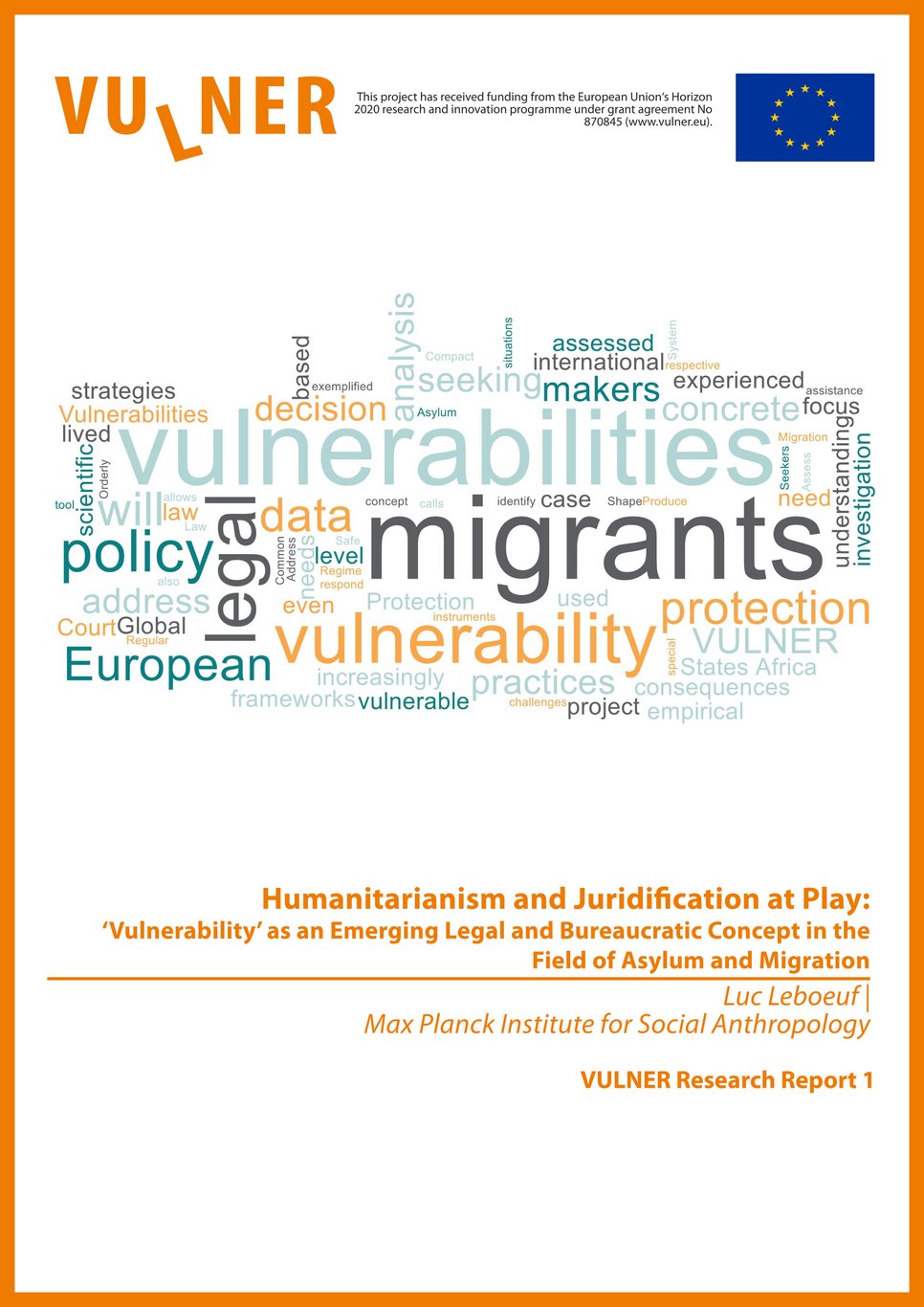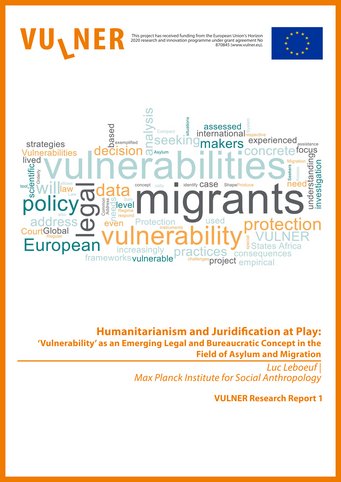Humanitarianism and Juridification at Play
‘Vulnerability’ as an Emerging Legal and Bureaucratic Concept in the
Field of Asylum and Migration by Luc Leboeuf

This introductory report contextualises the seven VULNER country reports and their own detailed and elaborate findings and conceptualisations. It should be read in conjunction with these country reports, which present the intermediate research results of the VULNER project, based on the first research phase. The first phase consisted in analysing the legal and bureaucratic vulnerability assessment tools and processes developed by state authorities and, when relevant in the domestic context, international aid agencies. The countries under study are located in Europe (Belgium, Germany, Italy and Norway), Africa (Uganda), the Middle East (Lebanon) and North America (Canada).
The report first introduces the common overall theoretical and methodological framework of the VULNER project which served as a basis for the VULNER country reports’ own findings and conceptualisations that reflect domestic specificities. The report shows that ‘vulnerability’ acquires different meanings depending on whether it is used as an analytical tool to study human experiences from an empirical perspective or as a legal and bureaucratic tool to tailor state intervention to people’s needs. It also shows that ‘vulnerability’ is not a neutral concept. The term conveys implicit ideological meanings and conceptions of equality, which contribute to both shaping and justifying the exclusionary effects inherent in relying on ‘vulnerability’ assessments to select the individuals who will receive specific advantages.
This observation raises various conceptual challenges, which resurface when designing and implementing vulnerability assessment tools and processes to tailor state intervention to various bureaucratic contexts – from targeting aid programmes to the most vulnerable refugees hosted in developing countries to adapting the reception conditions and asylum procedures to the needs of the most vulnerable asylum seekers.
The report also identifies the main threads and findings common to the various VULNER country reports. These common threads and findings relate to the vulnerability assessment tools and processes that have been developed in each country under study: How are vulnerabilities identified? What are the criteria, and which are the groups that benefit from particular attention? For what purposes are vulnerabilities identified? What are the concrete consequences of being labelled as ‘vulnerable’? The report examines these while showing how, taken together, the VULNER country reports illustrate the multiple challenges of relying on vulnerability assessments to tailor asylum and migration policies to the specific protection needs of the most vulnerable protection seekers. These challenges all involve striking a balance between systematic and standardised bureaucratic practices, and the flexibility required to address actual experiences of ‘vulnerabilities’, which are contextual and socially embedded.
The common findings highlight the risks of excessive reliance on standardised ‘vulnerability’ checks, which fail to engage comprehensively with people’s actual life challenges. Vulnerability assessments that are performed based on predefined criteria present major advantages in identifying immediate practical needs resulting from some personal characteristics (such as age, gender, severe health issues, etc.). But state actors on the ground commonly emphasise that these criteria should not lead to definitive consequences, which deprive the actors of the flexibility required to act in accordance with the specific needs of each individual they are responsible for. The findings from the VULNER country reports generally warn against developing ‘sanitised’ vulnerability assessments, which fail to account for the actual position of protection seekers and the complex ways in which their life challenges intersect.
Download the full report here.
